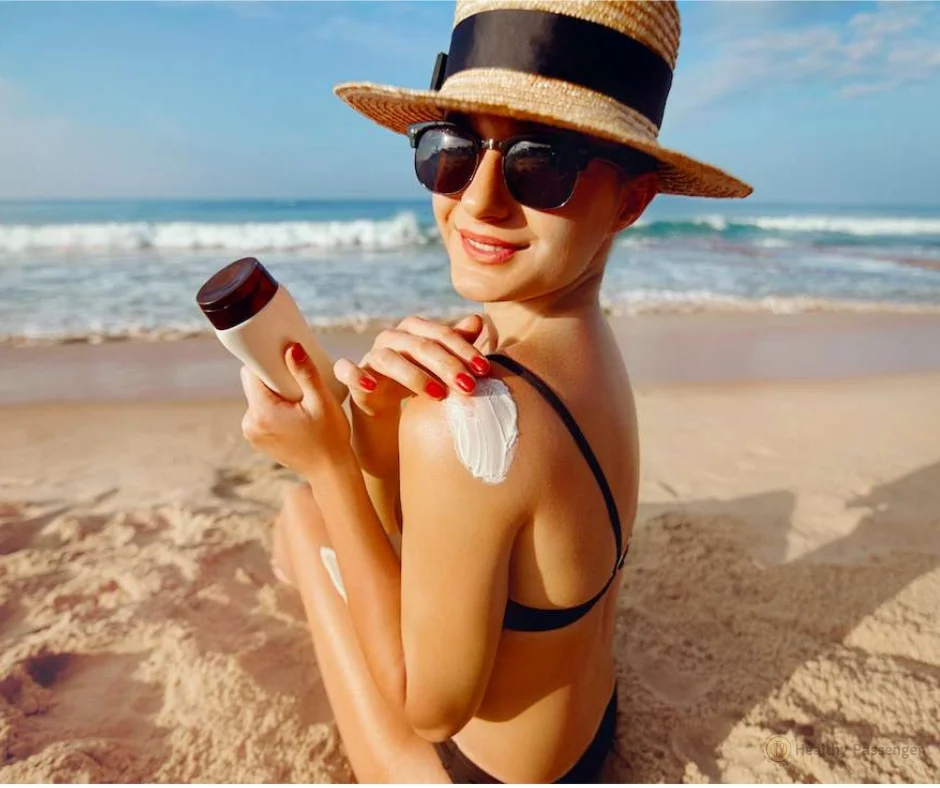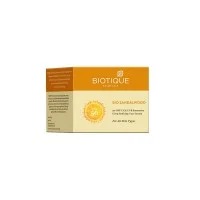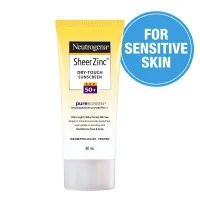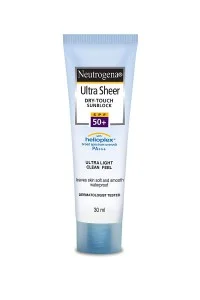How To Buy Yourself The Perfect Sunscreen
So, summers are here and so are the numerous skin problems that come along with the sun. The low energy levels, dehydration, heat stroke, sunburn, etc. are just some of the evils that come with the stronger and brighter summer sun.
Sunburn has also been associated with skin cancer. Exposure to the damaging sun rays can alter the DNA of melanocytes (the cells making melanin) and make them cancerous. The sun rays or UV rays are of three types UVA, UVB, and UVC rays. UVC rays are not harmful but UVA and UVB are the main culprits behind all the problems.
UVB rays have a direct effect on the skin and are responsible for sunburns and skin cancer. UVA rays, on the other hand, are the main cause behind the plethora of common skin problems such as ageing, tanning, degenerative changes in the body, damaged cells, blood vessels and fibrous tissues leading to the gradual loss of skin elasticity. The damage caused by the sun depends predominantly on the strength of sun rays, the duration you spend in sunlight, and your skin’s sensitivity. So, you need to take special care of your skin during summers.
Most of us use sunscreen only during the summers when it’s hot and sunny outside. But the fact is sunscreen should be a part of your daily skincare routine no matter which season it is. Regular usage of sunscreen reduces the chances of skin cancer by 40%.
Don’t worry you need not hibernate to save yourself from the sun damage. Choosing the right sunscreen can help you deal with it. But probably the biggest problem with using sunscreen is we know it’s important and still we are unaware of how to buy a sunscreen. Before you choose a sunscreen it is important that you know what factors you need to keep in mind.
1. SPF- Sun Protection Factor
Perhaps the first thing anyone sees before buying a sunscreen is the SPF. You should use a SPF 30 or is the SPF 50 sunscreen best for you? Most importantly what does SPF actually means and what are these numbers 30, 50? I know many people out there who would just buy a sunscreen not knowing what does SPF even mean !!
SPF is the sun protection factor. A higher SPF means better protection against UVB rays. SPF 30 means that if your skin burns in 10 minutes that sunscreen will delay it 30 times i.e. 300 minutes. So, now for the same strength of sun rays and duration of exposure, your skin will burn in 300 minutes.
Most sunscreens generally protect us from UVB rays which cause sunburn and cancer. The irony is women actually buy a higher SPF to prevent tanning but tanning is actually caused by UVA rays and not UVB rays.
Now since you know what SPF means let’s see which SPF should you choose. Normally if the sun is not very strong and you are not going to stay out for long SPF 15 or higher is good to go. SPF 15 provides 93% protection against UVB rays and is ideal for quick exposures only, it won’t be much effective if you plan on an extended outdoor stay.
For prolonged outdoor exposure to sun choose a SPF 30 or higher sunscreen. Now you may even choose a SPF 50 sunscreen but the difference between the protection level that SPF 50 will provide is just slightly more than that provided by SPF 30, the price difference, on the other hand, will be much more.
SPF 30 provides 97% protection, SPF 50 provides 98% protection, and SPF 100 provides 99% protection. No sunscreen will give you 100% protection. I personally chose SPF 30 because it is cheaper and provides almost similar protection to SPF 50 and as the SPF increases the sunscreen becomes more heavy and greasy.
2. Broad Spectrum
As I already mentioned most sunscreens protect against UVB rays only. UVB rays cause skin cancer and sunburn but UVA rays are the cause of problems such as wrinkles and skin ageing. Needless to you need protection against both UVA and UVB rays.
So, look out for sunscreens that say ‘Broad Spectrum’ or ‘Large Spectrum’. A broad spectrum sunscreen protects against both the harmful UV rays. And let me remind you again “use a sunscreen even if it's cloudy outside”. According to a study conducted at Washington University, people should use sunscreen on cloudy days as well. Clouds cannot block UVA lights, even if your skin is not exposed to direct light, they may cause some damages.
The ingredients in sunscreen that protect against UVA and UVB rays are different. In order for a sunscreen to protect against both it needs to be a combination of several protective ingredients.
Also Read: Top 20 ways to whiten dark underarms.
3. Water Resistant
Let’s get this clear for once and for all. There are no waterproof or sweat-proof sunscreens, period.
If a sunscreen claims that it’s waterproof either you are being fooled or it’s water-resistant. And please don’t get me started on the water resistant and waterproof are the same thing crap. Waterproof sunscreen should mean that it holds up even when you are swimming or sweating for a long time. Now, I am not expecting it to stay the whole day but come on, if it’s waterproof it should stay at least for a few hours.
Sadly, while most sunscreens will wash off the moment you take a dip in the pool, the water-resistant ones will stay for a maximum of 40 minutes or if they are very water resistant this may go up to 80 minutes. You will still need to reapply it after every 2 hours.
Anyways, if you sweat a lot or if you are planning on any activity that might cause you to sweat then it’s better to have a water-resistant sunscreen handy.
4. Physical or Chemical Sunscreen
Based on their method of protection sunscreens can be divided into chemical and physical sunscreens. Physical or mineral sunscreen physically block the UV rays while the chemical sunscreens must be absorbed by the skin to work effectively.
The problem with chemical sunscreen is- well, they have chemicals and these chemicals penetrate inside the skin to do their job and can disrupt your hormones. This doesn’t sounds so great, right? Another problem with chemical sunscreens is if you apply moisturiser before them then the sunscreen won’t be absorbed properly and if you apply sunscreen before moisturiser, the moisturiser won’t be effective.
Physical sunscreens, on the other hand, are not absorbed by the skin but are there as a shield. So, they are perfectly effective even on top of moisturisers.
Also Read: 13 DIY natural eye creams.
5. The Ingredients
The Food and Drug Administration (FDA) has approved seventeen sunscreen ingredients which include both chemical and physical substances. Chemical sunscreen ingredients, such as PABA (para-aminobenzoic acid) and cinnamates, absorb UV rays and convert the sun’s radiation into heat energy, while physical sunscreens (such as zinc oxide and titanium dioxide) deflect and scatter the rays before they penetrate the skin.
I have already told you above why physical sunscreens are better than chemical ones. But if you are still confused, choose the ingredients depending on your skin type. (1)
For children and people with sensitive skin:
Chemicals can irritate sensitive skin. The main ingredients of chemical sunscreens- PABA and oxybenzone are associated with skin reactions. If you have sensitive skin or you are buying a sunscreen for your little cupcake, physical sunscreens containing zinc oxide and titanium dioxide will be better any day.
For allergy, acne, and rosacea-prone skin:
Patients with allergy-prone skin or conditions such as acne or rosacea should avoid products containing preservatives and fragrances. Chemical sunscreens containing PABA or oxybenzone are not a great choice either.
As I have been saying, again and again, the sunscreen least likely to cause any skin reactions are the physical sunscreens or you can try the ones made with salicylates and ecamsule also. Allergy-prone and rosacea patients should also avoid sunscreens containing alcohol.
For oily acne-prone skin:
People with oily and acne-prone skin should use gel-based formulas, which normally contain alcohol and are more drying. They should avoid any creamy and greasy sunscreen which can cause breakouts. Look for the UVB filter ensulizole in chemical sunscreens, it has a lighter, less oily consistency.
For dry skin:
If you have dry skin you can either apply a moisturiser before using a physical sunscreen containing titanium oxide or zinc oxide or you can use a moisturising sunscreen. Sunscreens with ingredients such as lanolin, oils, and silicones such as dimethicone are moisturising and are often formulated as creams, lotions, or ointments.
For very fair skin:
Very fair skin means your melanin content is low and you are at a higher risk of skin cancer so use a sunscreen with an SPF of 30 or higher daily for extra protection.
For darker skin tones:
Darker-skinned people may be reluctant to use physical sunscreens, especially titanium-based products because they can make you look pale and ghostly. However, with New micronised manufacturing technologies, the particles are very small enough and easily blend in and disappear into the skin.
Also Read: How to use a beauty blender to get a flawless natural foundation base.
Other Tips and Suggestions
I have avoided giving you generic tips such as check the expiry date or do not use a sunscreen if it causes irritation...blah, blah, blah. Obviously you are smart enough to know this already !!
Anyways now you know what else to look for (other than the manufacturing date and price) when you buy a sunscreen, but before you leave just take a look at these quick sunscreen tips:
Apply your sunscreen 30 minutes before stepping out in the sun.
Reapply the sunscreen every 2 hours if you plan on staying out for long.
Use 2 tablespoon sunscreen to cover your entire body. People generally don’t use enough and end up getting only 10-25% of the benefit.
Buy a lip balm with at least SPF 30 to protect your lips.
If you are applying makeup either apply makeup 10 minutes after applying sunscreen or use products with SPF built into them such as a foundation with SPF as it will cover the entire face.
The sun rays are strongest from 10 am to 4 pm, try and stay indoors during this time or wear sunglasses and carry an umbrella.
I hope these tips prove to be helpful in choosing the right sunscreen for your skin type.
Top 4 Best Sunscreens
1. Biotique Bio Sandalwood Face & Body Sun Cream SPF 50 UVA/UVB Sunscreen For All Skin Types In The Sun Very Water Resistant
This sunscreen is blended with sandalwood, saffron, wheat germ, honey and bark of the Arjun tree to keep skin soft. It has a creamy texture and protects skin. It is broad spectrum SPF 50 UVA/UVB sunscreen. Water resistant, it retains SPF after 80 minutes in the water. The best part is it is great for all skin types.
2. Lotus Herbals Safe Sun UV Screen Matte Gel, SPF 50
This is one is gel based so it’s best for oily skin. It is a transparent white gel and spreads smoothly on skin and is not sticky. The sunscreen has a natural matte finish. It has high SPF of 50 pa +++ along with complete UVA and UVB protection. It does not provide resistance to water or sweat and thus needs to be reapplied every 3-4 hours.
3. Neutrogena Sheer Zinc Dry Touch Sunscreen SPF 50+ (For Sensitive Skin)
This one is specially for those with sensitive skin. It is a physical sunscreen with zinc oxide. Neutrogena sheer zinc sunscreen SPF 50+ helps prevent sunburns. Hypoallergenic and non comedogenic, this is also sweat and water resistant (80 minutes).
4. Neutrogena Ultra Sheer Dry Touch Sunblock, SPF 50+
The Neutrogena Ultra Sheer Dry-Touch Sunblock SPF 50+ is one of the best chemical sunscreen available in the market. It offers broad-spectrum protection against skin-ageing. It has a creamy texture. However, this will make your skin a little greasy or sweaty after sometime so you need to reapply frequently.
Browse through the beauty section to go through my other simple beauty tips and tricks or follow me on Instagram to get your daily dose of beauty.
Have a suggestion? Please leave a comment.








